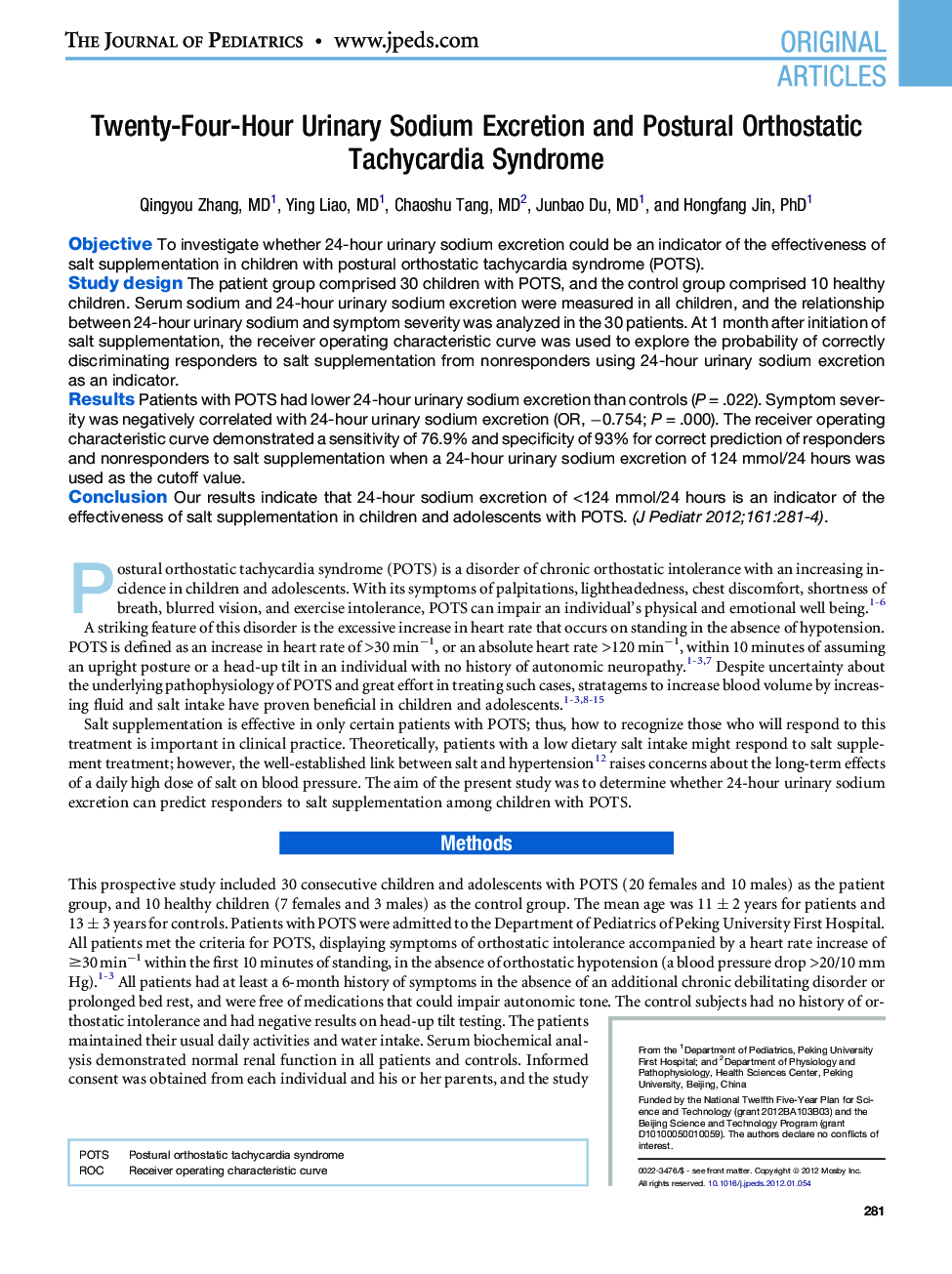| کد مقاله | کد نشریه | سال انتشار | مقاله انگلیسی | نسخه تمام متن |
|---|---|---|---|---|
| 6223100 | 1607479 | 2012 | 4 صفحه PDF | دانلود رایگان |

ObjectiveTo investigate whether 24-hour urinary sodium excretion could be an indicator of the effectiveness of salt supplementation in children with postural orthostatic tachycardia syndrome (POTS).Study designThe patient group comprised 30 children with POTS, and the control group comprised 10 healthy children. Serum sodium and 24-hour urinary sodium excretion were measured in all children, and the relationship between 24-hour urinary sodium and symptom severity was analyzed in the 30 patients. At 1 month after initiation of salt supplementation, the receiver operating characteristic curve was used to explore the probability of correctly discriminating responders to salt supplementation from nonresponders using 24-hour urinary sodium excretion as an indicator.ResultsPatients with POTS had lower 24-hour urinary sodium excretion than controls (P = .022). Symptom severity was negatively correlated with 24-hour urinary sodium excretion (OR, â0.754; P = .000). The receiver operating characteristic curve demonstrated a sensitivity of 76.9% and specificity of 93% for correct prediction of responders and nonresponders to salt supplementation when a 24-hour urinary sodium excretion of 124 mmol/24 hours was used as the cutoff value.ConclusionOur results indicate that 24-hour sodium excretion of <124 mmol/24 hours is an indicator of the effectiveness of salt supplementation in children and adolescents with POTS.
Journal: The Journal of Pediatrics - Volume 161, Issue 2, August 2012, Pages 281-284